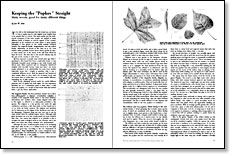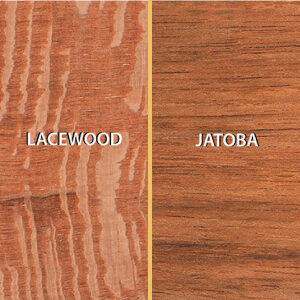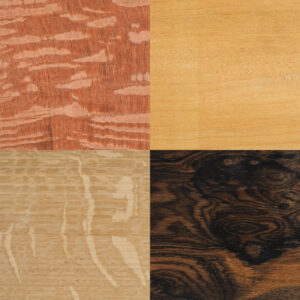Keeping the Poplars Straight
Many woods, good for many different things
Synopsis: The name poplar, or popple, as it’s sometimes known, is applied to many different kinds of lumber in various regions of the country. There are some dozen or more species belonging to four genera in two totally separate botanical families. The best clue to the wood’s identity may be the part of the country it came from. In this article, Jon W. Arno explains the differences between the magnolia family woods vs. willows and true poplars, which include aspens and cottonwoods. He discusses price and availability and shares brief lumber characteristics.
To be told at the lumberyard that the board you are about to buy is poplar may be only slightly more helpful than to be assured that it is wood. The name poplar and the backwoods corruption of this term, popple, are applied to many different kinds of lumber in various regions of the country. Embroiled in the confusion are some dozen or more species belonging to four genera in two totally separate botanical families: the magnolia family, Magnoliaceae, and the willow family, Salicaceae, as shown in the chart on p. 64. Your lumber dealer probably doesn’t know which species he has— to some extent he’s at the mercy of the mill from which he buys his wood. The best clue to the wood’s identity may be the part of the country it came from.
My first exposure to poplar came several years ago when I purchased a few board feet from a mail-order house. It was absolutely beautiful stock, arriving in nice wide boards with almost pure white sapwood and an olive-green heartwood streaked with chocolate brown. Some time later I ran across poplar advertised at an unbelievably low price from another mail-order house and I bought in quantity. Alas, it was a completely different wood. Both the sapwood and heartwood were creamy white in color, with a lot of tension wood, and the boards were no wider than 8 in. It even smelled different, reminding me of stale aspirin.
Both woods ultimately proved useful for totally different purposes and I’d gladly buy both again, but this experience launched me on a determined quest to learn what I could about the poplars, so I would at least know what had arrived when I got my future mail-orders.
The magnolia family— My first purchase turned out to have been yellow-poplar or tuliptree, Liriodendron tulipifera, a member of the magnolia family native to the lower midwest, mid-Atlantic and southern states. Poplar shipped from mills in this region or referred to as tulip-poplar probably is this species. The tuliptree is a fast grower, and under the right conditions it produces a tall, dear trunk, so that boards up to 12 in. wide are fairly common. The tuliptree and sycamore vie for distinction as the largest of the deciduous trees east of the Mississippi. Tuliptree’s huge size was once put to use by some Indian tribes for making dugout canoes.
Although truly giant specimens are now rare, young stands are more common than ever. One reason that tuliptree is so plentiful is that it occupies the same ecological niche as the chestnut, and it has taken over many sites where chestnut once predominated.
From Fine Woodworking #41
For the full article, download the PDF below:
Fine Woodworking Recommended Products

Ridgid R4331 Planer

AnchorSeal Log and Lumber End-Grain Sealer

DeWalt 735X Planer






















Comments
Could not read as a Milwaukee ad obstructed the left side.
Reload the page on your browser and the ad will go away.
Log in or create an account to post a comment.
Sign up Log in